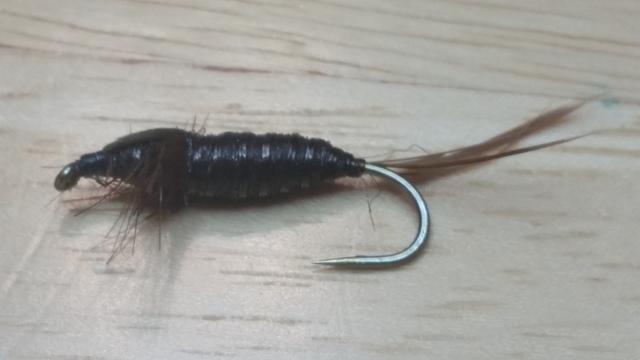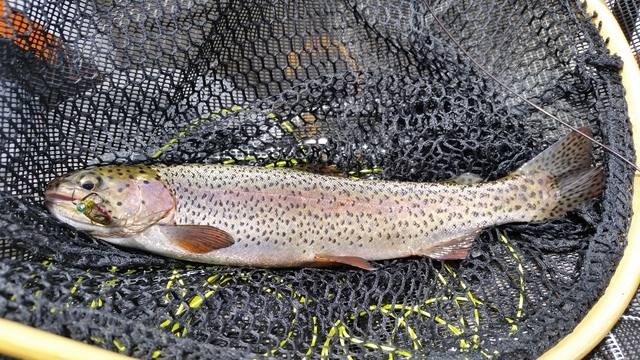Warming temperatures mean prime trout fishing is near




With daytime temperatures pushing past 70 degrees for 20 consecutive days, February will go down as the third-hottest month on record in Las Vegas. That means it won’t be long before the ice begins to melt from the shoreline on reservoirs to the north and opens the door on some of the best trout action of the year.
Known as “ice-off” or “ice-out” in colder climates, this is the time when the ice pulls away from the shoreline, creating pockets or stretches of open water. Trout that have been locked away for months under several inches will school up and start cruising the shallow water along the shoreline.
They’ll do the same thing along the edge of the ice as it continues to recede. Here they can dart back under cover of the ice if they feel threatened from above.
For anglers who fish from the shoreline, this can be an almost magical time of year because they will have the chance to catch larger fish that typically hold in deeper water farther away from the shoreline. At first, these cold-water fish will be a little lethargic, but after a few days, their appetites will kick in and the action will suddenly turn on. When that happens, the trout will be looking for just about anything that represents a change in the menu they have had under the ice.
Mid-February is the earliest I have ever fished ice-off. That was a few years ago at the Kirch Wildlife Management Area north of Alamo. That day I chose to fish Adams-McGill Reservoir, one of the four fishable waters on the management area. For nearly two hours, I tried a variety of fly patterns without success. Then — probably out of desperation — I tied on a dark brown and otherwise nondescript nymph pattern that had been tucked away in a corner of my fly box. It was one of the first fly patterns I had ever tied and one I have yet to see in a fly shop.
I cast the fly right up against the tules and let it sink. This time I made no attempt to retrieve the fly, and instead just let it sit there while I dreamed about the warm soup and crackers that waited back at the truck. I could just about taste the chicken broth when I was jolted back into reality by a powerful tug that pulled my rod tip under water. After a brief battle of wills, I slid the net under what would be the first of several fish in the 16- to 18-inch range that day.
With renewed energy, I cast the nymph again, this time adding a slow retrieve but finding no luck. So after a couple of casts, I just let it sit. Then came the hit and soon another fish. The keys to success were the dark colored fly, no retrieve and patience.
When fishing ice-off, keep in mind the fish will be cruising the edges of the ice or the shoreline and tend be schooled up. So you may have to wait until a school swims in your direction. Once there, the action will go from slow to fast in a hurry. Also remember the fish may not be ready to spend energy chasing something.
For rainbow trout, night crawlers, PowerBait in a variety of colors and similar offerings are generally good options for bait anglers. The rainbow variety of PowerBait with glitter is generally pretty good, but it never hurts to have some other color options. If you tie your hook 2 to 3 feet above a sinker, the PowerBait will float up into the strike zone. Adding a small piece of mini marshmallow to your night crawler can help to keep it up off the bottom as well.
If you prefer to use hardware, things may be a little slow for the first week or so, but once the fish get acclimated, get ready to hold on. Effective options include Panther Martin, Rooster Tail and Mepp’s spinners, along with Li’L Jake and Super Duper lures. Spoons also can be good.
Freelance writer Doug Nielsen is a conservation educator for the Nevada Department of Wildlife. His “In the Outdoors” column, published Thursday in the Las Vegas Review-Journal, is not affiliated with or endorsed by the NDOW. Any opinions he states in his column are his own. He can be reached at intheoutdoorslv@gmail.com.
CALENDAR
■Nevada’s big-game tag application process should begin by mid-March. Be on the lookout for online application materials. Once distributed, they also can be found at official hunting license vendors. To submit applications online, visit huntnevada.com.
■ The 25th annual WHIN — Wildlife & Habitat Improvement in Nevada — fundraising banquet is March 12 at the Gold Coast. For more information, visit www.whinlv.org.












